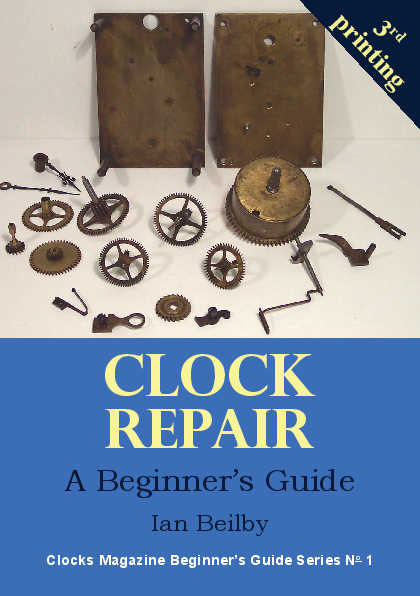
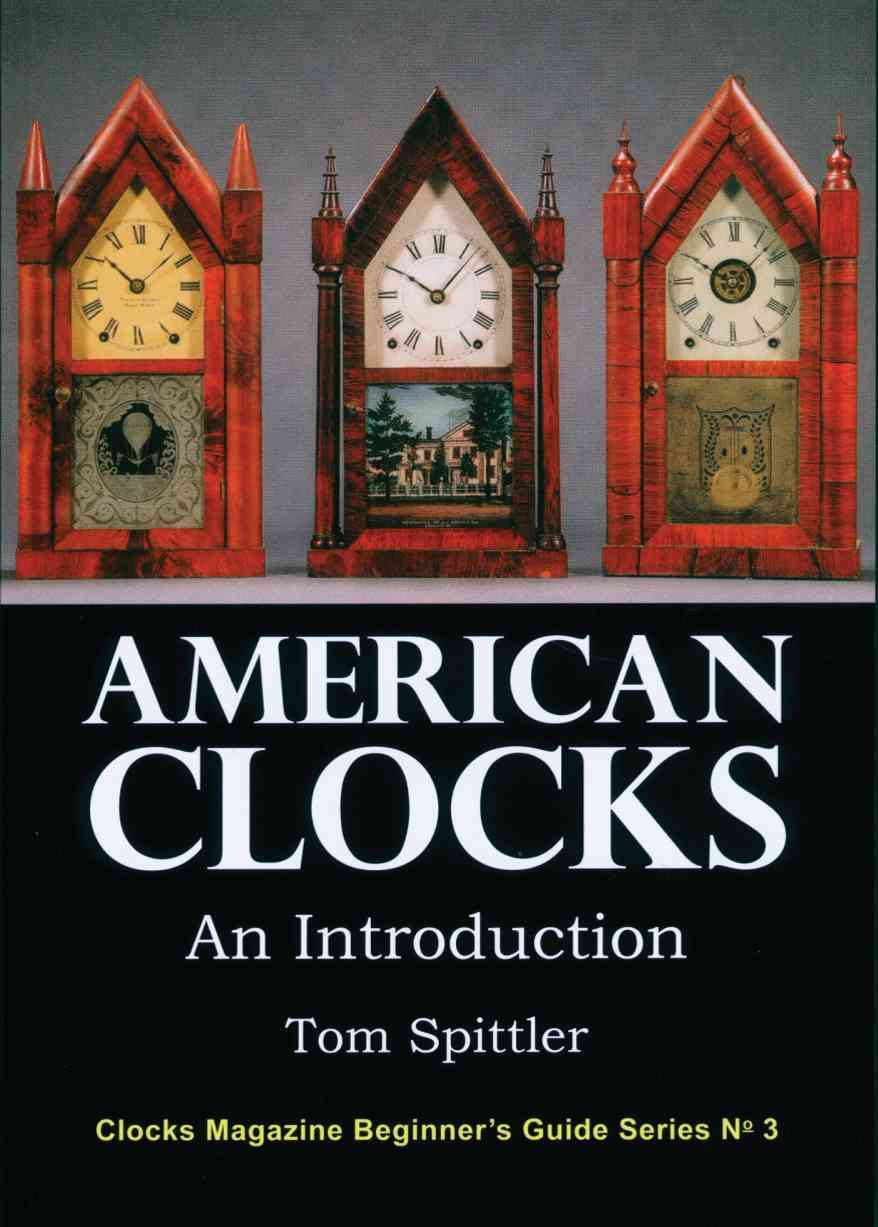
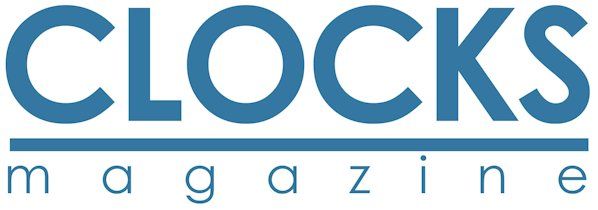
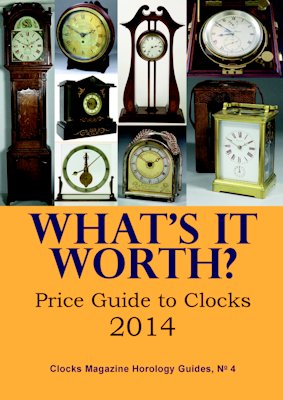
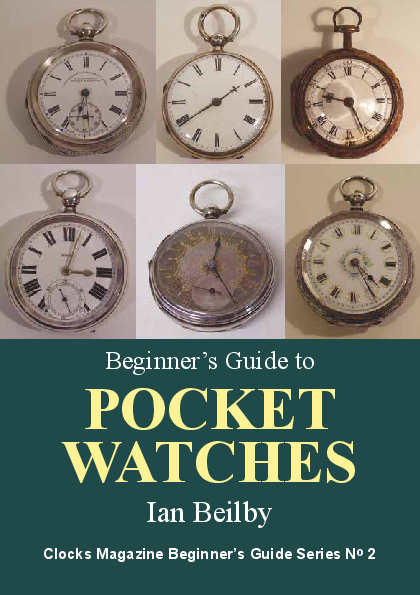
|
| from Clocks Magazine, October 2011 |
Early clockmakers of Scotlandby John Hunter, UKDownload a pdf of this article T he origin of the mechanical clock is shrouded in the mists of antiquity. It is thought to have been developed in Central Europe in the 12th or 13th centuries, but nobody knows exactly where or by whom. What we do know is that this new technology—as revolutionary for its time as the computer has been for ours—quickly spread across Europe, under the auspices of the religious elite. Timekeeping was important to the church, particularly in monasteries. The monastic day was typically divided into seven parts, or ‘chapters’—vigils, lauds, terce and mass, sext, none, vespers and compline—and these had to be observed at particular times. Clocks quickly became important to mark the start of these services, a religious significance which survives to this day in the naming of the ring that marks the minutes and hours on a clock face, the chapter ring. We don’t know when the first clock was set going in Scotland—written records from the period are very sparse indeed, many having been destroyed during the Reformation—but it was probably decades or more after its invention. Scotland, a primitive and backward place, was on the very edge of the known world at the time. The earliest record I have been able to find of a clock in Scotland is in the Peebles burgh records for 1462, where it was recorded that ‘thai haf statut and ordaynit that quhat euir he be that byis, other within the burcgh or outoutht it, skynnis, woll, hyddis, or quhytt clath fra vnfreemen of pak sall be tane vjd to the knok’ which, roughly translated, means that the burgh council had decided that anyone who bought skins, wool, hides or white cloth from ‘unfreemen’ (ie men who were not burgesses of Peebles) whould have to pay a tax (or fine) of sixpence which would go towards the upkeep of the town clock. It is highly unlikely that this was the first clock in Scotland. It is simply the first for which we have written records, and these records go on to record the upkeep and replacement of the clock, and other clocks in the burgh, until 1662, when they record that ‘nyne loads of lyme’ were given to John Murray, wright [joiner] ‘for his workmanship done to the hourlick and knok [clock]’. No doubt the clock and its successors survived for many more years, but I have chosen the 1660s as marking the end of the ‘early clockmakers’ in Scotland. During these first two centuries of recorded clockmaking in Scotland, the men who made clocks were mainly blacksmith-trained, and the clocks they made were for public buildings. By the 1660s, however, a new breed of clockmaker—clockmakers who had been trained by clockmakers as clockmakers—was beginning to emerge, men who made small clocks, domestic clocks, the sort of clock which would eventually be a normal constituent of every household in the land. 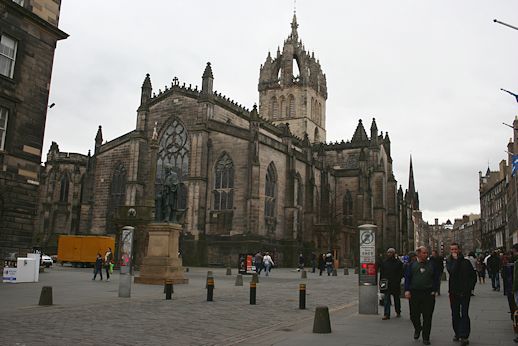
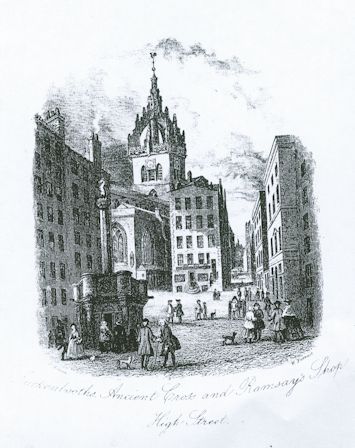
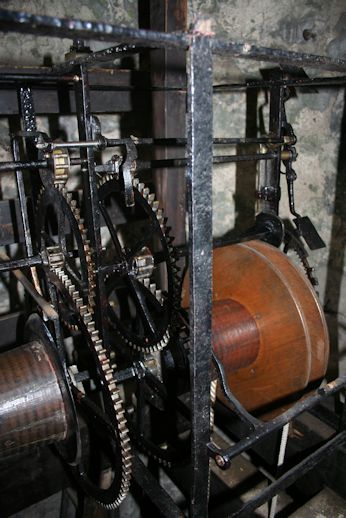
But I’m getting ahead of myself. Back in the late 15th/early 16th century the average blacksmith (perhaps all blacksmiths) did not have the basic technical knowledge to make a clock. They may have been coached by the nobility. In Peebles in 1494, for example, the burgh authorities paid ‘Sir Patrick Stanhous ... for the keping of the knok’ and in 1502 the Lord High Treasurer for Scotland gave ‘Schir James Petegrew’ £52 and 10 shillings for his ‘expense command to Strivelin to divis ane knok’ [expense of coming to Stirling to build a clock]. It is unlikely that these noblemen did any of the dirty work in making the clocks—that would be left to the blacksmiths—but it may have been their contacts on the Continent of Europe and in the church who instructed them in the intricacies of this brand new technology. So what did these early blacksmith-clockmakers actually do, and how did they do it. An interesting record exists in the old accounts of the City of Edinburgh regarding some work done on the town clock by Robert Creitch (1552-1570) of Leith, then an adjacent burgh. Creitch was a lorimer (saddler, makers of harnesses, spurs etc) by trade, though by 1570 he was well enough know for his horological work that he was being described as a ‘knokmaker’ [clockmaker]. This account, in the quaint and often obscure language of the time, is reproduced in full on a panel (‘At the townis command’) on this page. It shows that on 3rd February 1554/55 a solicitor [‘ane writtar’] was paid 18 pence for drawing up a contract between the council and Robert Creitch for the work. Three days later three men were given three shillings for taking the clock down from the steeple and putting it in a cart, the hire of which was charged at three shillings and three pence. Only the ‘greit wark’ could be accommodated in the cart; the ‘small wark’ had to be taken separately, in a creel, to Creitch’s workshop in Leith [Leyth]. The next item on the list is ‘twa faddom’ [two fathoms?] of rope to allow someone to strike the hours on the steeple bell while the clock was away being fixed. For this they paid eight pence. At this point the account gets even more interesting—if a little confusing—for we find that Creitch was paid five shillings for the ‘upputting of ane littel knok [small clock]’ in the council chamber. What exactly was the ‘littel knok’ they borrowed from John Stevenson? The lantern clock was still many years in the future, however Scotland had strong links with Europe, particularly France, and it is possible this was an early domestic clock brought over from there. 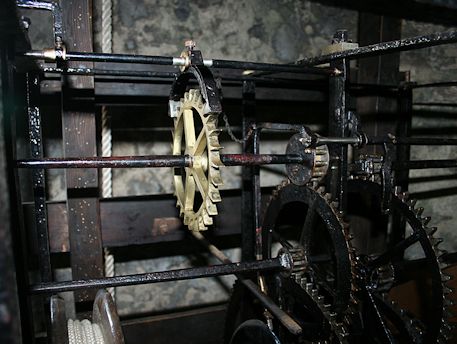
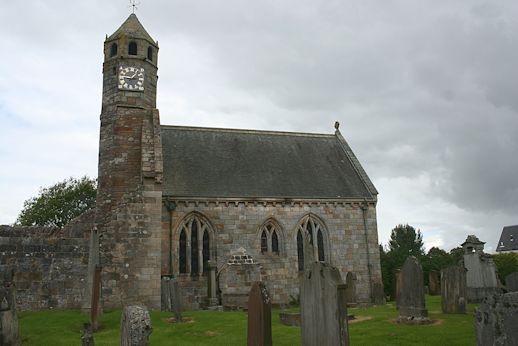
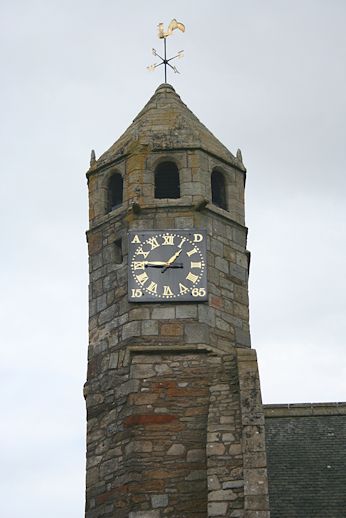
The next item is a payment of two shillings for wood for the barrels [‘ane cut of an greit tre’] of the main movement and the ‘half hour’. It therefore appears from this and some subsequent items that while the original movement struck the hours, at some later point a mechanism may have been attached which allowed it to strike on the half hour as well. This is my reading of it. If anyone has a better idea, I’d be delighted to hear from them. We then find the half-hour work being taken from the steeple to a cart and in the cart to Leith, and a man paid to carry the hammers also to Leith. From here on, money is being paid to bring the movement(s) back up to Edinburgh from Leith and reinstall them in the steeple. Cord is purchased to carry both the weight [pais] for the main movement and for the half-hour work and 14 shillings is given to ‘Samsoun, the painter’ to paint the movement with red lead to keep it from rusting. The next two items concern ‘twa daillis’. At first sight this looks as if it may refer to two dials, but my feeling is that this clock did not show the time, merely striking the hour and the half hour (as, incidentally, does the clock currently installed in the steeple). The ‘daillis’ here seem to be wood for a door and flooring for the part of the steeple in which the movement was situated, ‘to save it fra weit [wet] and wynd [wind]’. The door was to have a lock and key, provided for in the next item. The final two items are the money paid to Creitch for servicing or mending the clock, as well as five shillings ‘to his servands in drinksilver’. It was customary in these times to provide beer money for the maker’s apprentices and journeymen. 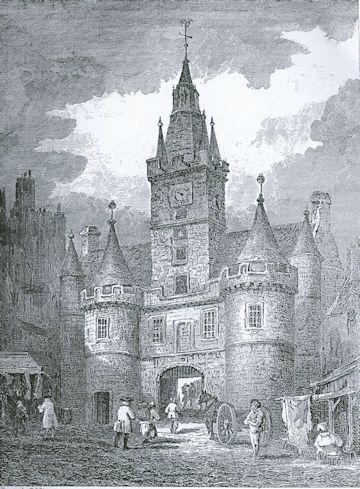
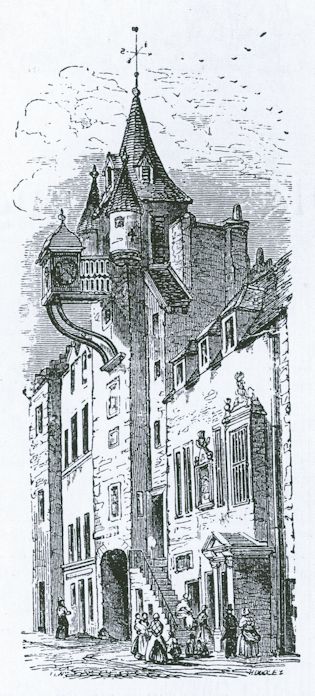
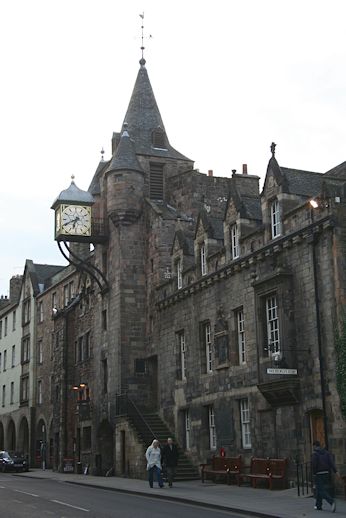

These accounts show how complicated an operation it could be in the 16th century to repair a church clock. And how expensive. The final bill came to £39 5s 6d, equivalent to around £8000 today. Creitch seems to have been a local man who came into clockmaking by a route unknown. As has been observed earlier, many of the early clockmakers of Scotland seem to have come into the trade via the blacksmith route. These include men like William Purves of Edinburgh (1539-1547), who made clocks for Edinburgh and Stirling, and David Kay of Crail (1556-1576), who made clocks for places as far afield as Dundee, Haddington and Glasgow. Others came as fully fledged clockmakers from abroad. Humphry Mills (1648-1695) was one such. He came to Scotland from England in the 1640s and made (or perhaps imported) lantern clocks. Nicolas Foucanote (1611-c1630) was another such ‘foreigner’. A Frenchman, once clockmaker to King Henry IV or France and Navarre, he first appears in the Scottish records becoming a burgess of Edinburgh on 2nd October 1611 (by right of his Scottish wife Elizabeth), a year after Henry IV was assassinated. By 1627 Foucanote was struggling to survive, his Royal pension, which he had received when he first arrived in Scotland, not having been paid since the death of Anne of Denmark (wife of James I of England and VI or Scotland) in 1619. By then Foucanote, ‘in his old dayis’ and ‘evermore seikly’ and having ‘no mair power to travill [work] nor winne his living’, was reduced to pleading with the authorities to restore his pension. By 1630 he was dead, his wife dying four years later. None of his clocks is known to have survived. Another prominent early Scottish clockmaker was William Smith of Canongate (1604-1644), then an independent burgh adjacent to Edinburgh. Smith was boxmaster of the Canongate Hammermen in 1627/28. Among his apprentices were Daniel Smith, son of John Smith, tailor, (possibly some relation) in 1619 and his nephew John Smith in 1628. There was also a James Smith in Edinburgh (1607-1660) who may have been related (two of his sons also became clockmakers). In 1638, William Smith became one of the signatories to the Covenant, a document which resonates down through Scottish history to this day. The Covenanters, acting in response to the introduction of the Anglican prayer book into the Scottish church, were a group who bound themselves to upholding the Presbyterian doctrine as the sole religion of Scotland. Interestingly, William and his nephew John Smith were ‘essaymasters’ in 1644 to one Philip Buknor ‘Inglischman, watchemaker’, who applied for admission to the Canongate hammerman and was admitted in December of that year. Brian Loomes records a Philip Buckner of London, but as this maker was apprenticed in 1660 and didn’t receive his freedom until 1668 he can’t have been the same man. Perhaps he was some relation; we simply don’t know. In this short summary I have mentioned a few of the men making clocks in Scotland in the first two centuries for which we have records. There were many more. Records are scarce and where they do exist are sparse. Some of the men mentioned in them in connection with clocks may not have been trained craftsmen at all, simply oiling, adjusting and generally looking after clocks in their care. But many more were properly trained blacksmith-clockmakers who made a real and lasting contribution of clockmaking in Scotland. Download a pdf of this article |
| © 1977 to 2015 Clocks Magazine & Splat Publishing Ltd |